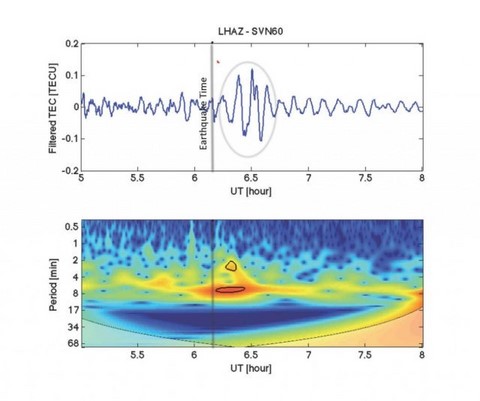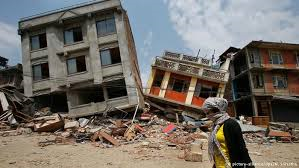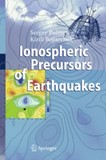Nepal earthquakes associated with disturbances in the atmosphere and ionosphere
The death toll of the two earthquakes in Nepal is estimated to be close to 10,000.
With an intensity of 7,8 on the Richter Scale, the earthquake of April 25. 2015 in Nepal brought widespread destruction. Yet, findings associated with this seism could help to develop early warning systems.
The ionosphere is a part of the upper Earth atmosphere where, thanks to the intense short-wave solar radiation, ions, i.e. charged particles, are able to yet increase their enrichment with electrons. The ionosphere constitutes the largest part of the upper atmosphere. This layer begins above the mesosphere at an altitude of ca 80 km, reaches ist maximum charge at ca 300km, then changes over gradually into interplanetary space.
With the help of a GPS receptor especially developped for this research, it became possible to ascertain the occurrence of disturbances in the ionosphere in the wake of the Nepal earthquake. Thanks to monitoring, perfomed in near-real time, of the vertical total-ionization ( Vertical Total Electron Content - VTEC) of the ionosphere, scientists are now able to represent graphically the disturbances of the ionosheric ionization following an earthquake.

In the graph above (circled) we can see those which occurred shortly after the earthquake in Nepal. The lower graph shows the relative intensity of the ionospehric disturbances induced by earthquake. The colors red (high) and blue (low) represent the intensity of the disturbances.
The data shows that, after the first seismic shock in Nepal (represented by a black vertical line) it took about 21 minutes for the ionospheric disturbances generated by the earthquake to reach the GPS-station (LHAZ). This station is situated about 640 km from the actual epicenter, in Lhassa, the capital of Tibet, in China.
Scientists from all over the world are studying the ionosphere before and after natural events such as earthquakes, volcanic eruptions and tsunamis, which often induce wave propagation which might allow to develop early warning systems for tsunamis and other catastropes. In the future, it might become possible therefore to predict, or at least have a forewarning of an earthquake thanks to monitoring the changes in the ionosphere.
Dominik, sonnen-sturm info
Translated from the German by Anne-Marie de Grazia
Thus Dominik Zgrzendek, a young amateur astronomer, author of the German website sonnen-sturm.info.
Dominik will be pleased to know that Dimitar Ouzounov, of the Center of Excellence for Earth Systems Science & Observations, of Chapman University, CA, USA, our Q-MAG.org friend Sergey Pulinets, and Dmitry Davidenko, both of the Space Research Institute of the Russian Academy of Sciences, Moscow, Russia, have now analyzed in a scientific paper the data collected in the process of atmospheric and ionospheric monitoring before the two severe earthquakes which struck Nepal on April 25 and May 12, 2015. The paper was presented at the IWEB2 Conference in Japan.
Revealing pre-earthquake signatures in atmosphere and ionosphere associated with 2015 M7.8 and M7.3 events in Nepal - D. Ouzounov, S. Pulinets, D. Davidenko
We analyze retrospectively/prospectively the transient variations of three different physical parameters of atmosphere during the time of M7.8 and M7.3 events in Nepal: outgoing earth radiation (OLR), GPS/TEC and the thermodynamic proprieties in the lower atmosphere. We found that in mid March 2015 a rapid augment of satellite observed earth radiation in atmosphere and the anomaly located in close vicinity to the future M7.8 epicenter reached the maximum on April 21-22. Our continuous satellite analysis revealed prospectively the new strong anomaly on May 3th, which was the reason to contemplate another large event in the area. On May 12, 2015 a large aftershock of M7.3 occurred. The analysis of air temperature from weather ground station near Katmandu shows analogous patterns with offset 1-2 days earlier to the satellite anomalies. The GPS/TEC data analysis indicates an augment and variation in electron density reaching a maximum value during April 22-24 period. A strong negative TEC anomaly in the crest of EIA (Equatorial Ionospheric Anomaly) has occurred on April 21st and strong positive on April 24th, 2015. Our preliminary results show correlation between the pre-earthquake atmospheric and ionospheric anomalies and the occurrence of 2015 M7.8 and M7.3 events in Nepal.
By Dimitar Ouzounov, Sergey Pulinets and Dmitry Davidenko




